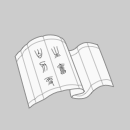
学术英语写作与研究方法(第2版)/全人教育英语专业本科教材系列
全新正版 极速发货
¥ 17.93 4.0折 ¥ 45 全新
库存2件
广东广州
认证卖家担保交易快速发货售后保障
作者刘承宇
出版社中国人民大学出版社
ISBN9787300296883
出版时间2021-07
装帧平装
开本16开
定价45元
货号31234771
上书时间2024-09-10
- 最新上架
商品详情
- 品相描述:全新
- 商品描述
-
作者简介
目录
Chapter One Academic Writing:A Process of Creation
1.1 Creation:At the heart of research
1.2 Distinguishing between everyday genres and academic genres
1.3 Moving from topics to problems
1.4 Writing activities and prompts
1.5 Reference materials
Chapter Two Reading Sources Critically
2.1 Observations versus inferences
2.2 Evaluating sources
2.3 Building an annotated bibliography
2.4 Writing activities and prompts
2.5 Reference materials
Chapter Three Synthesizing the Literature Review
3.1 Synthesis:What is it
3.2 Synthesis points to a problem
3.3 Chronological organizational patterns
3.4 Comparison and contrast patterns
3.5 Writing activities, prompts, and peer review
3.6 Reference materials
Chapter Four Paraphrasing without Plagiarizing
4.1 Plagiarism:What is it
4.2 Paraphrase: What makes it challenging to do well
4.3 Quotation: Why are direct quotations used less in the sciences than in the humanities
4.4 Writing activities, prompts, and peer review
4.5 Reference materials
Chapter Five Criteria-based Reasoning
5.1 Questions that cannot be answered matter-of-factly
5.2 Killing the cliché "Every coin has two sides"
Criteria-based reasoning in thesis-driven arguments
5.4 Writing activities and prompts
5.5 Reference materials
Chapter Six Writing about Texts
6.1 Reading what is on the page
6.2 Evidence-based analysis of a text
6.3 Distinguishing between modernism and post-modernism
6.4 Writing activities, prompts, and peer review
6.5 Reference materials
Chapter Seven Drafting the Argument
7.1 What is an argument
7.2 Thesis: Is the main claim arguable and sufficiently qualified
7.3 Structure: What kind of structure does the research question invite
7.4 Support: Are the reasons sufficiently developed with the best available evidence
7.5 Writing activities, prompts, and peer review
7.6 Reference materials
Chapter Eight Writing a Research Proposal
8.1 Why write a proposal
8.2 Research question
8.3 Significance
8.4 Feasibility
8.5 Writing activities, prompts, and peer review
内容摘要
本次教材的修订深刻贯彻落实“立德树人”的根本任务,并结合国家一流专业和一流课程建设的要求,把思想政治教育元素融入教材修订中,把社会主义核心价值
观融入教材中,把中华民族优秀文化融入教材中。教材的选材、练习的设计均考虑政治性、科学性、系统性、
知识性、时代性、经典性、
趣味性和实用性等原则。本次修订更新了教材中一些毕业论文等学术文章写作,课题申报、课题报告撰写等内容的实例,替换一些练习习题。
— 没有更多了 —












以下为对购买帮助不大的评价